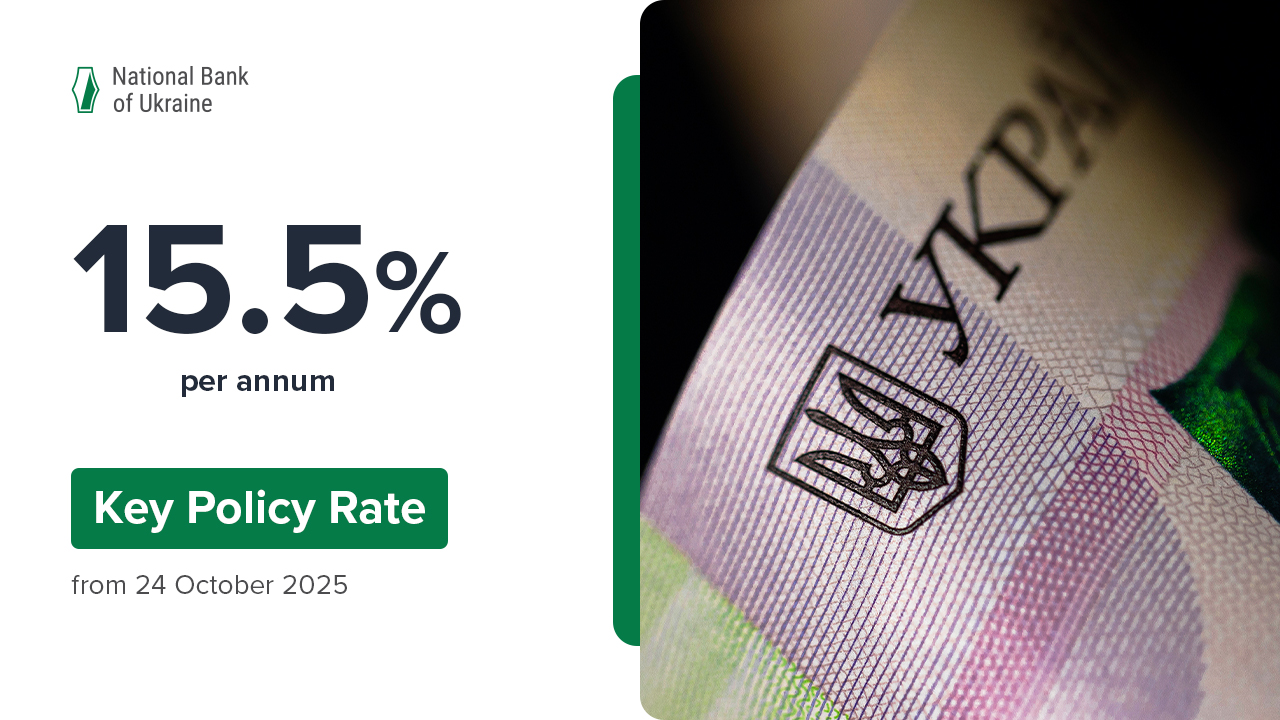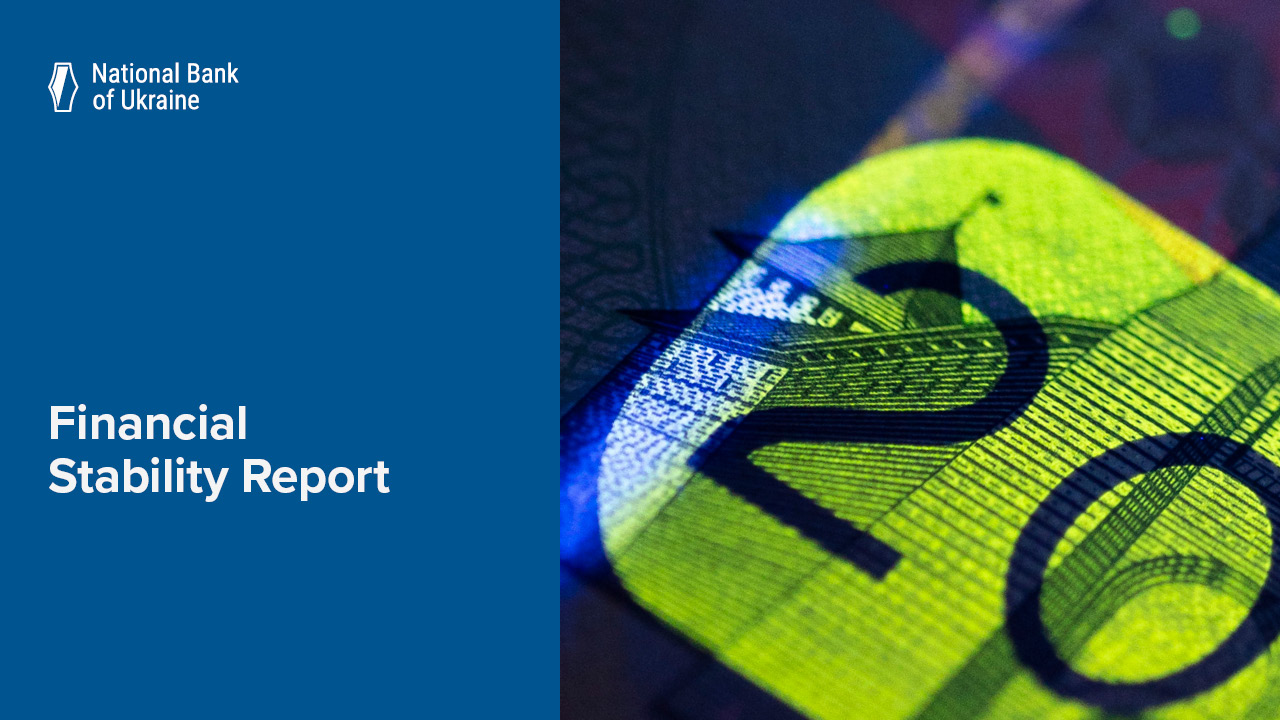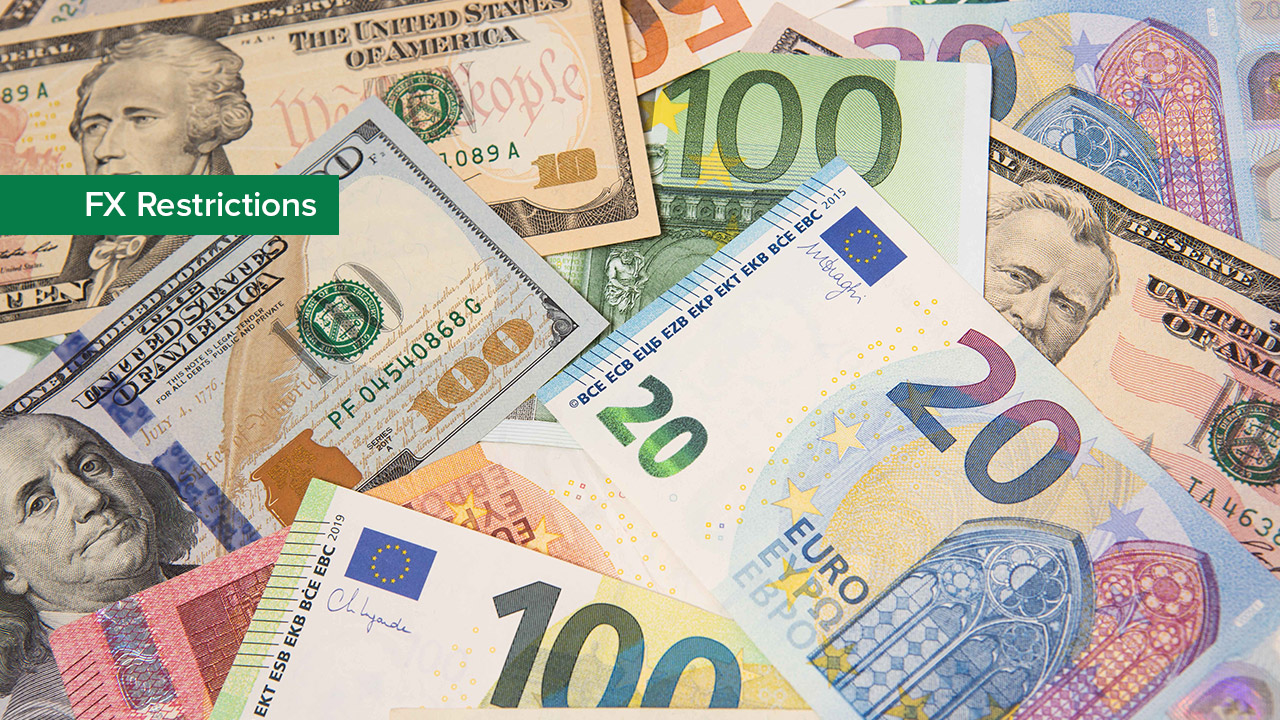In December 2023, year-over-year inflation remained unchanged from November at 5.1%. In monthly terms, prices grew by 0.7%. This is according to data published by the State Statistics Service of Ukraine.
The 2023 plunge in inflation was caused by a number of factors. Specifically, the NBU’s measures to maintain the sustainability of the FX market eased underlying inflationary pressures. This restrained the growth in prices for a wide range of goods with an import component and helped improve exchange-rate and inflation expectations. The fixing of tariffs for some utilities weighed down the growth in administrative prices. Good harvests and an associated increase in the supply of food products contributed to a significant reduction in food inflation. These factors outweighed the effects of rising price pressures from business production costs due to higher electricity prices and wages.
Actual consumer inflation in December 2023 was below the forecast the NBU published in its October 2023 Inflation Report. Core inflation also slowed by significantly more than projected as FX market participants rapidly adjusted to the regime of managed flexibility of the exchange rate.
In 2023, core inflation decelerated to 4.9%
Processed foods grew in price by 5.9% yoy in 2023. This increase continued to slow in December as pressure from business expenses, primarily to buy food raw materials, eased off and because the FX market situation was kept in check. Difficulties with food exports, including due to the blockade of the border crossings in Ukraine’s west, remained an additional factor. Meanwhile, the impact of the border blockade on goods in this group that are primarily imported – except for some dairy products – came out smaller compared to the effect on raw food products. Price increases decelerated for bread, flour, confectionery products, meat and fish products, coffee, tea, juices, dried fruits, and spices. The fall in sunflower oil prices deepened.
Nonfood prices declined by 0.1% yoy in 2023 thanks to improved expectations as FX market conditions remained under control. In December, prices for clothing and footwear, electronic devices, home appliances, tableware, toys, and bicycles continued to decrease year-on-year. Price increases decelerated for personal care products, furniture, home textiles, home renovation products, cars, and more.
Having slowed in December compared to November, the growth in services prices, as of end-2023, came in at 10.7%. Cafe and restaurant services grew in price more slowly as pressure eased off from the cost of raw materials used in the production of food. The prices of healthcare, veterinary, and financial services grew at a slower pace, as did prices for car maintenance, the internet, mobile communications, beauty salon services, hotel stays, and dry cleaner services. In contrast, home repair services grew more expensive at a quicker clip, due to both higher demand and a shortage of qualified personnel.
Raw foods rose in price by 2.2% in 2023
In December, raw food prices went back to growing again after falling in November. Prices for vegetables and fruits returned to growth due to the rise in logistical costs triggered by the blockage of the western border. In particular, prices rose for tomatoes, cucumbers, zucchini, and kiwi, while the pullback in the prices of bananas and lemons in annual terms became less notable than in previous months. In addition, prices were affected by a shrinking supply of quality products as warehouses ran into space shortages and storage costs went up. As a result, prices for potatoes, cabbage, and apples surged. Milk price growth accelerated amid a limited supply of raw materials in the domestic market and higher import prices due to the border blockade. The slowdown in the rate of decline in egg prices was due to significant energy expenses and sustained external demand. Meanwhile, cereal, flour, and sugar prices continued to decline, reflecting low export prices and increased production.
Administered prices increased by 10.7% over the past year
In December 2023, the prices of alcoholic beverages and tobacco products continued to rise more slowly thanks to less pressure from production costs. The latter eased off because expectations improved amid a controlled FX market situation and significant pressure from illegal products. The moratorium on raising utility prices for households continued to restrain the increase in administered prices.
At the same time, the growth in prices for motor transport services sped up somewhat as fuel prices increased in previous months and labor costs rose. The obstruction of the border may have caused the prices of some medicines to rise faster.
Fuel prices were up 2.7% in 2023
In December, fuel price growth decelerated compared to November. This was primarily due to the decline in global oil prices and the improvement in expectations amid controlled conditions in the FX market. Concerns over the blockade’s impact on fuel prices dissipated soon after a rerouting of supply chains.
The plunge in inflation in 2023 was ensured by the NBU’s measures to maintain exchange rate sustainability, which helped improve expectations, a moratorium on increases in certain utility tariffs, a sufficient supply of food, and a decrease in global energy prices. Inflation is expected to remain subdued in 2024 as well. To this end, the NBU will continue to pursue a policy aimed at maintaining the sustainability of the FX market. However, risks of inflationary pressure intensifying in 2024 persist, primarily due to the impact of the war.
On 25 January 2024, during a press briefing on decisions taken by the NBU Board, the central bank will make public its updated macroeconomic forecast, including inflation projections for 2024–2026. A more detailed macroeconomic forecast will be published in the Inflation Report on 1 February 2023.







